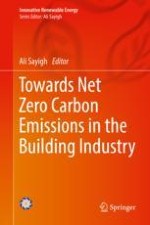2023 | OriginalPaper | Buchkapitel
Beyond Energy Efficiency: The Emerging Era of Smart Bioenergy
verfasst von : Rachel Armstrong
Erschienen in: Towards Net Zero Carbon Emissions in the Building Industry
Aktivieren Sie unsere intelligente Suche, um passende Fachinhalte oder Patente zu finden.
Wählen Sie Textabschnitte aus um mit Künstlicher Intelligenz passenden Patente zu finden. powered by
Markieren Sie Textabschnitte, um KI-gestützt weitere passende Inhalte zu finden. powered by
